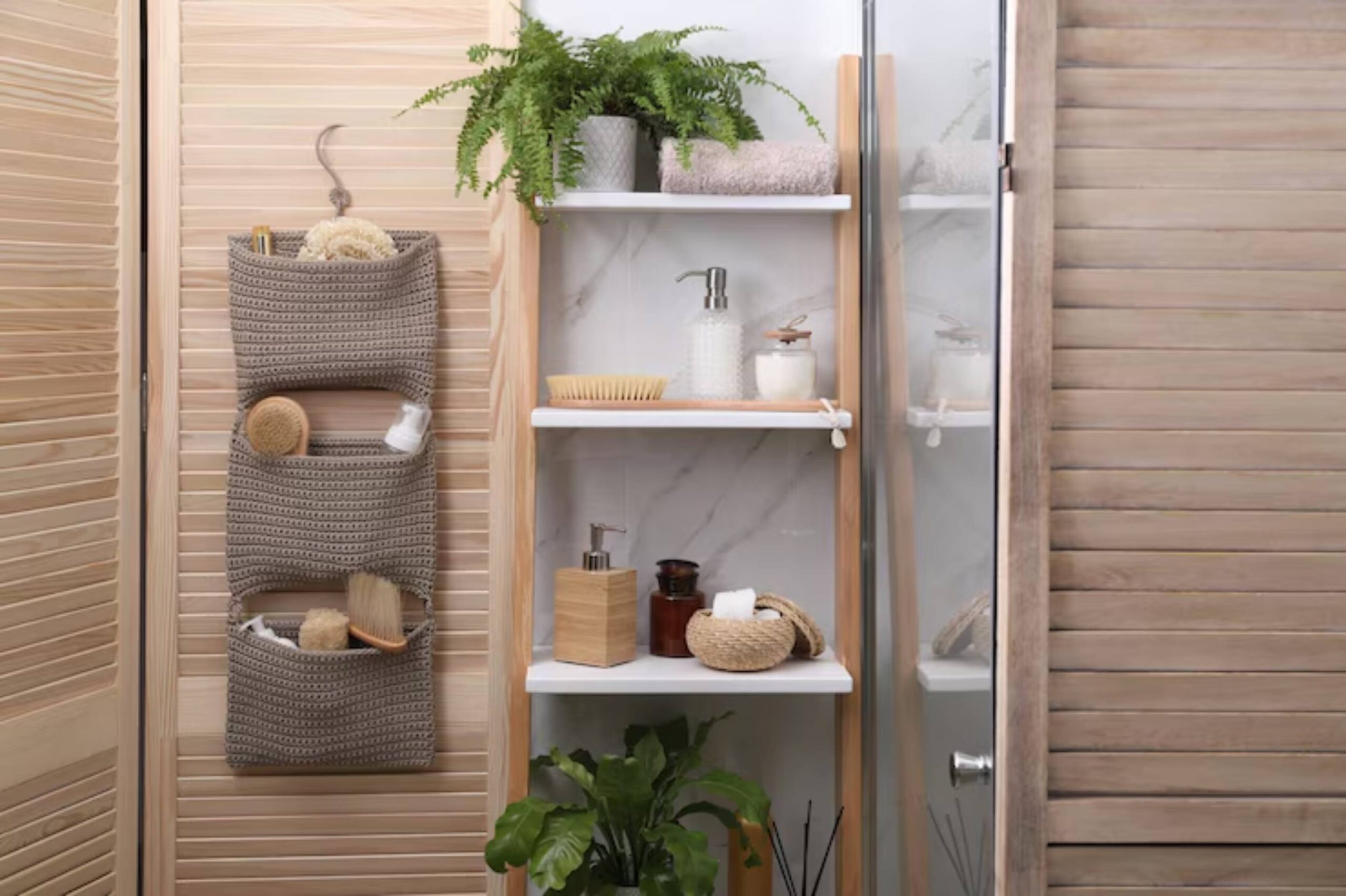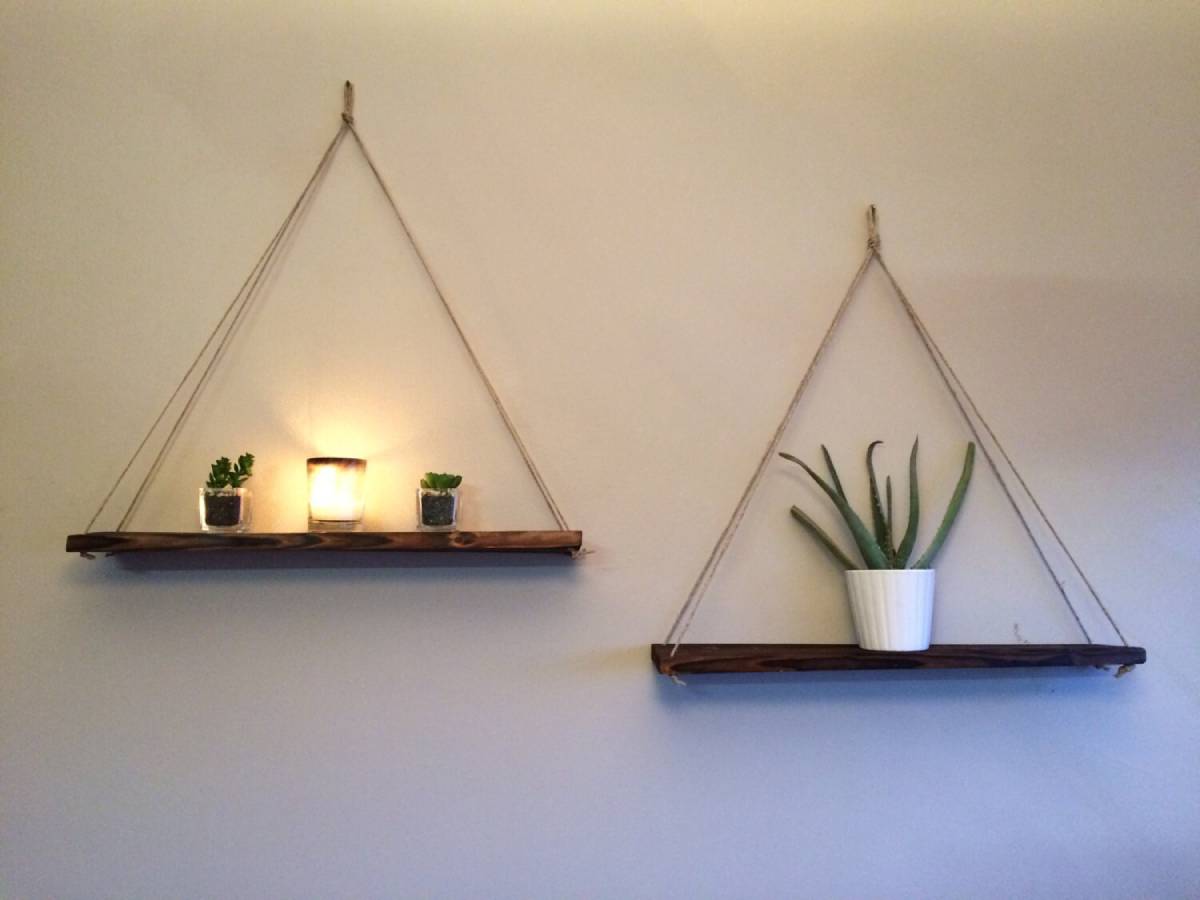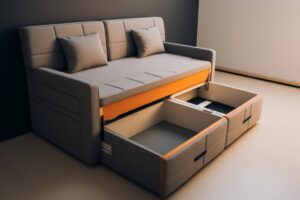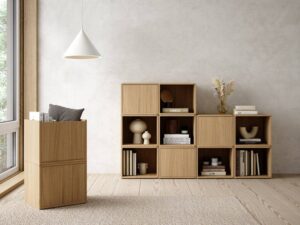The Interior Design Blog

Stackable Bins That Look Stylish & Save Room
Let’s face it: no matter how minimalist we try to be, storage is a constant need — especially in smaller homes. But clunky plastic crates and overstuffed drawers can disrupt the flow of a beautifully curated space. That’s where stackable bins step in as the unsung heroes of tidy living. Not only do they maximise vertical space, but today’s designs also blend style and storage so effortlessly, they double as decor.
Whether you’re living in a one-bed flat, downsizing to a tiny home, or just tired of the visual noise from mismatched containers, compact storage containers offer a sleek, scalable solution. You get to reclaim your space — and make it look good while you’re at it.
In this article, we’ll explore how to choose the best stackable bins for different areas of the home, what makes them indispensable for tiny home organisers, and how to ensure your storage not only saves space but enhances it.
Why Stackable Bins Are a Small-Space Game Changer
Vertical Space = Untapped Storage
When floor space is limited, the smartest move is to think upward. Stackable bins let you create tidy towers of storage that take up very little footprint, which is ideal for:
- Studio flats
- Tiny houses
- Utility rooms
- Inside cupboards
- Under beds or on top of wardrobes
You’re essentially turning one square foot of floor into three or four levels of function. That’s serious value in a small home.
Modular by Nature, Flexible by Design
Most stackable bins are modular, which means they can be:
- Re-stacked at different heights
- Mixed and matched by size or shape
- Rearranged as needs evolve
Whether you’re storing tools, toys, toiletries or tinned goods, you can reconfigure your system to suit your lifestyle — or your mood.
This kind of flexibility fits well with home upgrades like best modular storage units for tiny spaces, where adaptability is key to creating long-term, usable layouts.
The Best Places to Use Stackable Bins
1. The Kitchen
Stackable bins in pantries or on counters are ideal for:
- Spices and dry goods
- Packet snacks and lunchbox items
- Reusable bottles, lids, or cling film rolls
Opt for clear or labelled bins to keep everything visible and accessible. Stack smaller containers for categorised sections, such as baking or breakfast.
2. The Bathroom

Bathrooms tend to have limited cupboard space. Use bins to:
- Separate skincare, haircare, and cleaning products
- Store loo rolls or towels in tall, narrow stacks
- Tuck under the sink or inside shelves
Look for water-resistant materials like plastic or coated canvas.
3. The Wardrobe or Entryway
These zones benefit hugely from stackable shoe bins, seasonal clothing organisers or catch-all baskets.
- Stackable drawers with pull-down fronts work great for shoes or folded clothes
- Use woven or fabric cubes in open wardrobes for a softer aesthetic
- Add smaller bins near entryways for hats, gloves or pet gear
This trick works particularly well when paired with strategies like closet organisers that fit tiny spaces, where every inch counts.
4. The Office or Living Room
Here, style matters just as much as storage. Use:
- Sturdy stackable paper trays or drawer units
- Neutral-toned bins styled within open shelving
- Vertical towers beside desks to reduce visual clutter
The goal: hide the mess, keep the vibe.
What to Look For in Stylish Stackable Bins
Materials Matter
Function should come first — but that doesn’t mean you have to settle for sterile.
Consider:
- Acrylic or clear plastic: Best for visibility and minimalism
- Wood or bamboo bins: Warm and organic; perfect for living areas
- Fabric or canvas: Soft, lightweight, great for bedrooms or kids’ rooms
- Metal mesh: Clean, strong, and perfect for industrial decor
Features to Prioritise
When shopping for bins, think about:
- Stackability: Do they nest securely without slipping?
- Accessibility: Do they have pull-down fronts, handles or lids?
- Dimensions: Will they fit the shelf, closet or unit where you want to use them?
- Aesthetic: Will they add to the room, not just hide things?
Avoid overly bulky bins unless they serve a serious purpose, such as blanket storage or large appliance parts.
Design Tips: Keeping Bins Beautiful and Functional
Keep It Consistent
One of the fastest ways to elevate a space is to use matching or coordinated bins throughout.
This could mean:
- Matching colours
- Similar shapes
- Repeating textures (e.g. all linen-covered bins or all bamboo)
Uniformity equals visual calm, especially in small spaces.
Label Thoughtfully
Labels are not only helpful — they’re stylish. Use:
- Minimalist printed labels for pantry and kitchen bins
- Clip-on chalkboard labels for seasonal storage
- Embroidered or engraved tags for a soft, tactile touch
This helps everyone in the household find what they need — and know where to put it back.
Vary the Stack for Design Appeal
Stacking doesn’t always have to mean uniform towers. Try mixing:
- Large bins on the bottom, small on the top
- Lidded containers for deep storage
- Open baskets for items used daily
The key is to strike a balance between accessibility and aesthetics.
Small-Space Bin Hacks That Go a Long Way
Use the Inside of Cupboard Doors
Stick small stackable caddies on the back of kitchen, bathroom or wardrobe doors.
Great for:
- Cleaning products
- First aid supplies
- Beauty items or small accessories
Stack Beneath Console Tables or Benches
Instead of bulky drawers, use two or three stylish stackable bins beneath entryway benches or side tables.
It keeps clutter out of sight but easily reachable.
Mix Bins with Other Storage Types
Combine stackable bins with:

- Hanging wall shelves
- Under-bed boxes
- Rolling trolleys or baskets on wheels
This layered approach gives you more flexibility and a cleaner look.
Maintenance Tips for Long-Term Use
- Wipe plastic or acrylic bins monthly with mild soap
- Use sachets or moisture absorbers in fabric bins to prevent mildew
- Re-stack bins only when they’re evenly filled (avoid tipping)
- Reassess every season — donate or declutter what you don’t use
Storage isn’t static. Revisit your setup often to make sure it still serves your needs.
Common Mistakes to Avoid
- Overloading top bins — always put heavier items in lower levels
- Using stackables where pull-out access is more practical
- Mixing too many colours or textures in the same area
- Buying before measuring (yes, measure height, depth, width!)
Keep the aesthetic and flow of your room in mind, not just the bin capacity.
Conclusion: Style and Storage Can Coexist
In tiny homes and compact flats, stackable bins aren’t just a convenience — they’re a design strategy. They bring order to chaos, form to function, and beauty to utility. Whether you’re stashing craft supplies in the living room, organising your pantry, or finally taming the avalanche of accessories in your wardrobe, these tiny home organisers make every corner work harder.
And perhaps best of all? You don’t need to choose between tidy and tasteful. With the right materials, layouts, and label love, your storage can look as intentional as the rest of your decor.
So next time you’re staring at an overflowing drawer or a cluttered shelf, remember — the solution may be as simple as stacking your way up.









